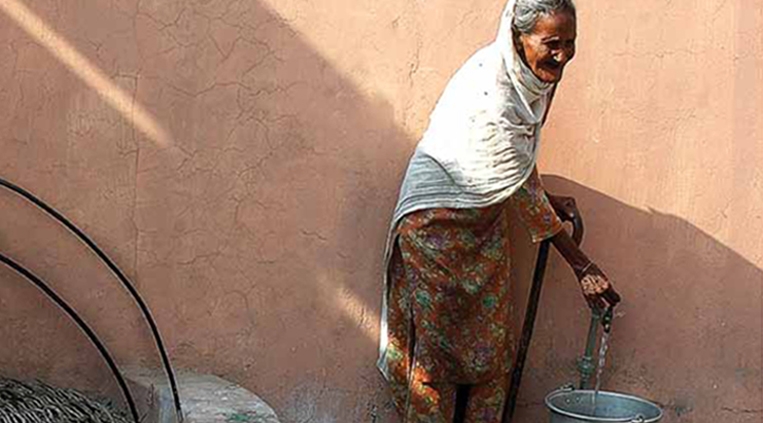SUMMARY
Even in prosperous Punjab, villagers face an acute scarcity of water. Demand for water is rising with a growing population that wants improved service levels, but supply is increasingly constrained on account of falling water tables and the deteriorating quality of ground water. While 17 percent of Punjab’s villages do not have water supply systems at all, the remaining 83 percent receive only intermittent supply, and in some areas the water is contaminated with heavy metals such as uranium.
In 2006, the Punjab government launched a medium-term program under the World Bank-supported Punjab Rural Water Supply and Sanitation Project (2006-2013). It aimed to provide all the state’s 15,170 habitations with 70 litres per capita per day (lpcd) of safe drinking water by Dec 2013. The project sought to make rural communities responsible for construction and management of their own water supply systems and to make the systems financially sustainable, with consumers paying for operations and maintenance on an ongoing basis.
Each scheme cost between Rs. 37 and Rs.58 lakhs ($82,000-$129,000) and built a piped distribution network to households by accessing ground water aquifers or canal water, as well as overhead reservoirs to store the water.
Metering and billing is being promoted to encourage people to save water and prevent leakage and waste. By January 2013, 200 out of the 840 villages covered under the project had opted for metered household connections, and 15 of these had round-the-clock (24/7) water supply. About 90 percent of consumers are paying their water bills regularly, while the others are being persuaded to do so. Some villages now have sizable savings in their Operations and Maintenance (O&M) accounts—varying from Rs. 35,000 to Rs. 1 million.
A new online complaint redressal system is reaching out to over 16 million people in more than 15,000 habitations. This is helping check absenteeism or non-performance of staff in remote villages and making the management of the system more transparent, accountable and citizen-friendly.
The Punjab government plans to expand the scheme to all its villages in a phased manner. A new state water policy for the rural areas is being drafted to encourage metered water connections, financial sustainability and, where possible, 24/7 water supply.
CHALLENGES
The project faced a number of challenges. Strong political commitment was necessary, especially since this was the first time that Punjab was implementing a community-based demand-driven project that aimed to decentralize rural water supply and sanitation services to local governance institutions across the state. Project functionaries had to work very hard to win the support of the political leadership by creating awareness about the long-term benefits of decentralization. Commitment and ownership by the senior bureaucracy were also essential, as the ways of working by engineers in the state’s water supply department needed to be transformed. Enormous efforts were needed to build capacity at all levels.
At least 70 percent of households in an average-sized village - about 220 households - needed to opt for water connections for the schemes to be financially sustainable. If these households regularly paid Rs 60-70 per month as water charges, revenues would be enough to meet ongoing O&M expenses. However, it was a challenge to convince villagers to shift to metered connections and pay for the volume of water they consumed. Despite vigorous Information, Education and Communication (IEC) campaigns, villagers were just not willing to pay their contributory share or to sign up for the program until the cost sharing rules were modified. In fact, the program began to take off only a year and a half after the project began, when the upper limits for community contributions were reduced from Rs.1,500 to Rs. 800. Contributions were even lower for border villages, those that were prone to floods and water logging, as well as those with predominantly hilly terrain.
Moreover, while the project called for the active participation of beneficiaries, few NGOs existed to support the consultation and implementation process.

